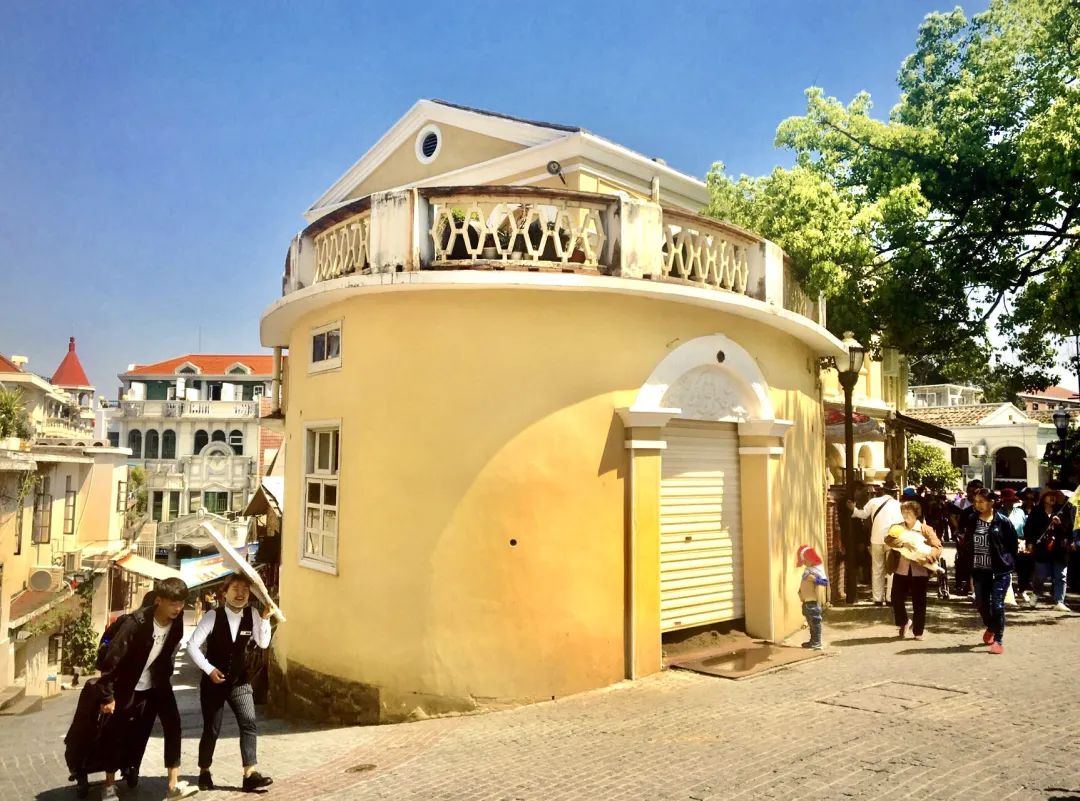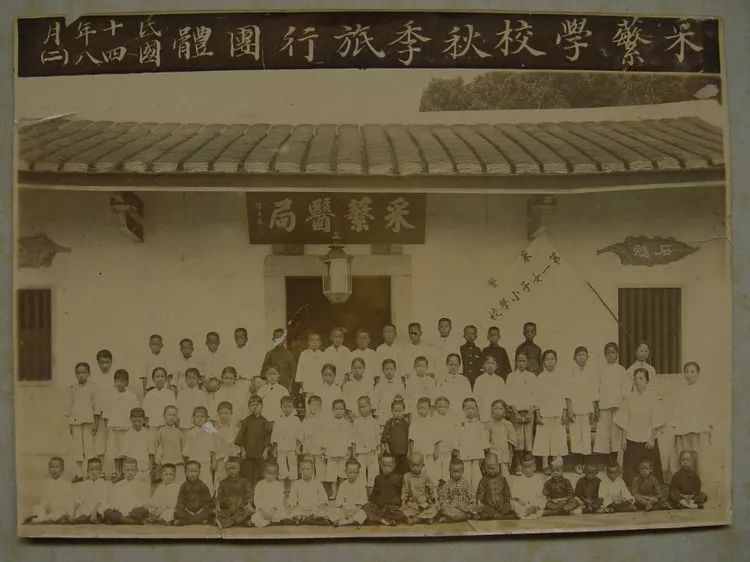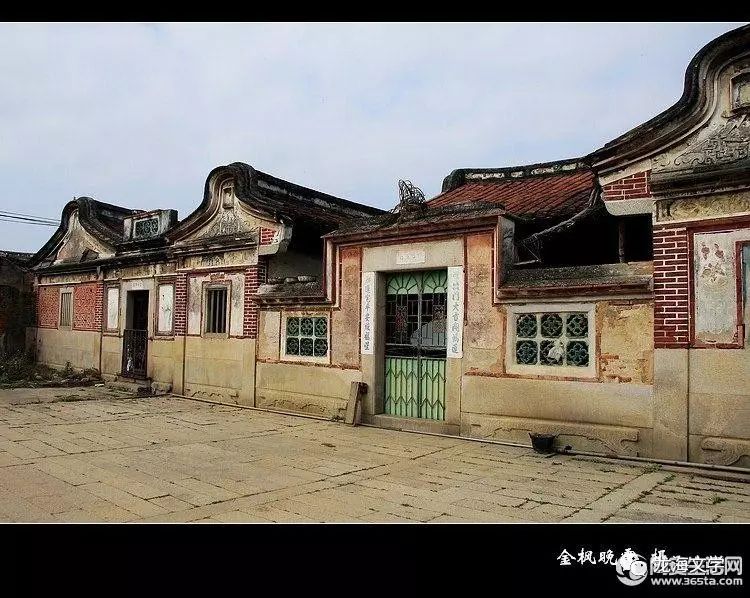
You've become a very rich man.
The town of Zi Nai, where Lin Bingxiang (1873-1944) was born, consists of two alluvial islands, Humao and Wujiao, separated by the Zhonggang waterway, with a total area of 68 square kilometers. This town is located in the northeastern part of Longhai City, located at the mouth of the Jiulong River, neighboring Xiamen City in the east, Jiaomei Town (Taiwan Business Investment Zone) in the north, southwest of Shimai Town (Longhai City), and Harbor End (Zhangzhou Development Zone) across the water, the mouth of the Jiulong River, a bright pearl. Because of its special geographical location, since ancient times, Zi Nai Town, a lot of people who go out to sea to make a living and work across the ocean, with Jiaomei is the most important overseas Chinese townships in Longhai City.
Lin Bingxiang's father, Lin He Ban at the age of 15 (Qing Xianfeng six years that is, in 1856 AD) was introduced by an overseas Chinese businessman in East America, with the sale of fishing nets from the 2 yuan to fight across the ocean, after a hard struggle, and finally succeeded. Lin Bingxiang childhood in his hometown Zi Nai read private school, and later went to Singapore to enter St. Ruth's School to study English. After graduation, he became the secretary of Fengyuan Navigation Bureau, responsible for the management of 29 ships. He was able to deal with foreign businessmen in fluent English, and was promoted to manager because of his skillful dispatching and lucrative profits.
Thirty years of Guangxu (1904), Lin Bingxiang and his younger brother Lin Bingmao co-organized the Hefeng Shipping Company, which started with only three ships. He returned to Xiamen, Fuzhou, Shanghai and other places to visit, but also to Japan, Britain, the United States and other countries to study, and gradually familiarize themselves with the port business, growing insights and talents. Xuantong three years (1911), and the Feng ship company into and Feng ship limited company, an increase of 5 million yuan, with a displacement of more than 1,000 tons of ocean-going ships 8, including the Fengqing displacement of 5,284 tons, was rare at the time of the giant ship, the route has been extended to Europe and the Pacific coast ports. In addition, there were more than 20 small ships operating between the ports of Dutch East Indies (Indonesia) and British Malaya. The company carried thousands of Chinese immigrants to Southeast Asia each year for development. During the First World War, Europe's major shipping companies to reduce the transport business in Asia, Lim Beng Siang seized the favorable opportunity to further expand operations, access to the rapid development of Singapore's "King of Shipping", Southeast Asia's shipping industry in the bull's-eye, out of sight of the international shipping industry. To commemorate his contribution to the development of Singapore, the authorities named one of the wharves "Pyeong Cheong Kei".
In order to make the dispersed funds of overseas Chinese businessmen can be centralized to play a greater role, Lin Bingxiang also actively advocated the establishment of banks to serve overseas Chinese businessmen. In the first year of the Republic of China (1912), he and Lin Wenqing, Li Junyuan and other people jointly organized the Chinese Bank, and served as the first prime minister of the bank. Then, he participated in organizing the Hofeng Bank, which had a capital of about 6 million yuan in the ninth year of the Republic of China, and he was the chairman of the board of directors. A few years later, the branches of Ho Fung Bank had spread to Sing Ma, Indonesia, Hong Kong, Xiamen, Shanghai, etc. It became the first Chinese-funded bank in Southeast Asia to carry out international business, and played an important role in promoting the development of commerce and industry in Southeast Asia.
He also large-scale factories, open mines, reclamation rubber garden, the Chamber of Commerce, build banks, become Singapore set navigation, industry, business in one of the Chinese giant, is a generation of Southeast Asian overseas Chinese history of overseas Chinese heroes. 1916 was recommended to serve as the President of the Singapore Chinese Chamber of Commerce and Industry.
Being a public-spirited person and benefiting the people of Hong Kong
Lin Bingxiang life of philanthropy, virtue and charity, enthusiastic about public welfare, in his hometown can be said to have a good reputation. Guangxu 29 years (1903), successful Lin Bingxiang donated 60,000 silver yuan to expand the local Raffles College, so the British authorities were awarded the honorary title of "Taiping Bureau of Squire". He loved his hometown, rich not forgetting his hometown, the Republic of China three years (1914) he and his brother Lin Bingmao cooperation in ZiNi founded XiangMao school, the next year in honor of his father renamed CaiArtemisia school (his father LinHeBan also known as CaiArtemisia), CaiArtemisia school a total of 9: a school in the city of the community, the second school in the xiZhou community, the third school in the xiaHang community, the fourth school in the new yangangang community, five school in the caoHong community, the sixth school in the jinDing community, the seventh school in the xunYu community, the eighth school in renGeBei community, nine schools in the community. The ninth school is in Renhe, which is located in all villages in Zi Nai and covers the whole island. All these schools were financed by the Lin brothers. He not only contributed money, but also contributed his efforts. He went back to his hometown several times to personally survey the school sites, enrich the equipment, find teachers, and traveled all over the place, sparing no effort. The schools trained a large number of students for the local community, and many of them became successful talents at home and abroad.
Lin Bingxiang also founded the "Cai Artemisia Medical Bureau", Zhangzhou famous Chinese medicine practitioners for the poor free of charge, employing two doctors, and equipped with two classes of sedan chairmen, such as in the case of an emergency, then carry the doctor to the patient's home to diagnose and treat. He and his brother, Lin Bingmao, prepared their own fund of 31,000 silver dollars to build real estate in Zhangzhou, including a market house in South Zhangzhou, a store house on Shixing North Road (i.e. Fucheng) adjoining ten houses, and a house in Xiyuan Inn near the west entrance of Zhongshan Park (now on Xinhua West Road), and he used the rents of these properties as the funds for the Artemisia Artemisia Artemisia Artemisia Medical Bureau. He founded the "Artemisia Artemisia Charity Association", which gave three buckets of rice and two pieces of ocean to the orphans, the poor and the needy on the whole island, regardless of their surnames; if the poor could not be put in coffins after their deaths, they were given coffins and relief. Every year at the end of the year, the ferry age gold to the poor, benefiting about 2,000 people each year. He rented a room in Singapore founded the "Fu Long Mao" (short for Fujian Longxi Hu Mao) line, where folks into the Star Island, through the Fu Long Mao line to Xiamen to board the "Fung" size ship, all free of charge, arriving in Singapore to the Fu Long Mao line, as if to home, accommodation and food! All food and lodging were free of charge until a job was found, which provided great convenience for the development of nationals across the ocean.
In order to solve the problem of surplus labor in his hometown, he also set up factories to develop production, opened Jianxiang Yarn Factory (later renamed Jianxiang Knitting Factory) in ZiNi, and opened Jianfeng Brewery in ShiYi, recruiting local migrant workers. He also co-founded Huatai Electric Lighting Company in Shima Town, making Shima Town the first town in Zhangzhou to use electricity for processing and lighting. Also with Chen Zhilin (in the beginning of the Civil War was the Director of Finance of Fujian Province), Chen Qixiang and others, pooled silver 320,000 yuan, in Zhangpu Wanan opened Fengxiang company, reclaimed land to open farms, purchased sugar machines to create sugar mills, purchased sugar cane seeds from Java, and vigorously promote the production of sugar cane in the province has produced a revolutionary effect. In addition, he donated funds to build a road in Humao Island, paved with stone slabs on both sides to facilitate people's travel.
In order to improve rural sanitation facilities, he mobilized farmers to move toilets and cowsheds outside the village. He spared no expense in purchasing dozens of acres of land in the Xizhou community to build a park for the enjoyment and recreation of farmers in the four villages. This is very similar to the current "rural environment improvement". He also advocated the change of customs, advocating economy of marriage and funeral, about the parents of the community jointly agreed: outside the community to get married at most only allowed to do wedding banquets four, the community's use of civilized marriage ceremonies, and do not hold a banquet, only please sugar. From here, we can see that Lin Bingxiang accept the influence of foreign advanced culture, but also strive to "change customs" in their hometowns, the implementation of new civilized style.
Lin Bingxiang patriotism and love for the countryside, the benefit of mulberry, at that time has had a wide range of impact, he had been the Fujian Provincial Government of the time expressly commended, the Ministry of Transportation of the Kuomintang government hired him as a consultant, the Beijing Red Cross Society specially awarded medals. In the fourth year of the Republic of China (1915), the President of the National Government awarded him the Order of the Third Class Jiahe and a huge plaque of "Haste and Justice".
After the world economic crisis in 1929, Lin Bingxiang was unable to repay the overdraft of Hutchison Bank and resigned from the post of chairman of the board of directors of Hutchison Bank, and was forced to sell the ships of Hutchison Steamship Company to repay the debt. 1944, February, he died in Singapore at the age of 71 years old. (Some history books record his death in 1934, which is incorrect.) In May 1947, according to Lin Bingxiang's will, his coffin was escorted by his son, Lin Shaopeng, and moved to his hometown by the special ship "Fung Shing", where he was buried in the "Cemetery" on the west wigwam of "Fan Chai Lou". At that time, people attending the funeral stood in a long queue and offered sacrifices for seven days.
Leave a legacy that deserves to be preserved
Now, Lin Bingxiang has been gone for nearly 70 years, he left behind the ruins are mostly abandoned and destroyed, no longer exist. The remaining Lin Bingxiang relics are few, precious and urgently need to be protected.

Located in Longhai Zi Nai Town, Xizhou Village, Da Chu, Lin Bingxiang's former residence is commonly known as "five falls" and "two falls". One of the "five falls" is the same structure and style of the five red brick residential buildings connected to form, covering an area of nearly 5,000 square meters. With the "five falls" is only a hundred meters away from the "two falls" is the same structure and style of the two red brick residential buildings, covering an area of nearly 2,000 square meters. The former residence sits in the north-south, neat and orderly, rolled roof decoration, front Cheng Yuan, back and around the porch room. There are exquisite carvings on the walls, doors, windows and stone steps everywhere, and the carvings and color paintings of the Eight Immortals' Table, the Master Chair and the Big Screen in the hall are even more exquisite and delicate, and even the copper door ring on the main door is also very elaborate and casting is very beautiful and generous. The former residence is surrounded by water channels that protect the house, and in order to enter the building, one must pass through small bridges with wooden planks that can be pulled and put down, and now these water channels have basically been filled in. The former residence has been built for a century, now looks a bit old and dilapidated, and in front of the house is piled up with cow dung cultivating mushrooms, relatively dirty, but the charm is still there, you can glimpse the former prosperity and splendor of the year. As long as a little bit of organization and repair, can be restored to its original appearance, reproducing the elegance.
The site of Xizhou Artemisia School is the only remaining "Fanzai Building" in ZiNi Town, and in some rooms of the building, you can still see blackboards with badly peeled surfaces on the walls, and on them there is a table of teachers and students on duty, which were classrooms of the Artemisia School in those days. In front of the building was a garden, a pond, and many fruit trees, all kinds of famous trees, it is said that the greening around was quite beautiful. Now the whole school building is covered with cobwebs, piled up with debris, and surrounded by tall weeds. However, from the well-decorated corridors and doors and windows can be seen when the intention of the builders. Because the rural areas were mostly brick and wood structures, such reinforced concrete buildings are rare, so the local villagers are called "Fanzai building".
Now, Lin Bingxiang's former residence has become a municipal cultural relics protection unit, the relevant departments are studying the repair and protection, some people propose to build a Lin Bingxiang memorial room here. Some researchers compared him with his contemporary Chen Jiageng, that Lin's industry is no less than Chen, but far less famous than Chen. Lin Bingxiang as a pioneer of overseas business, the hometown of modern industrial pioneers, advocates of modern civilization, the implementation of public welfare undertakings, worthy of a flag of the overseas Chinese.




